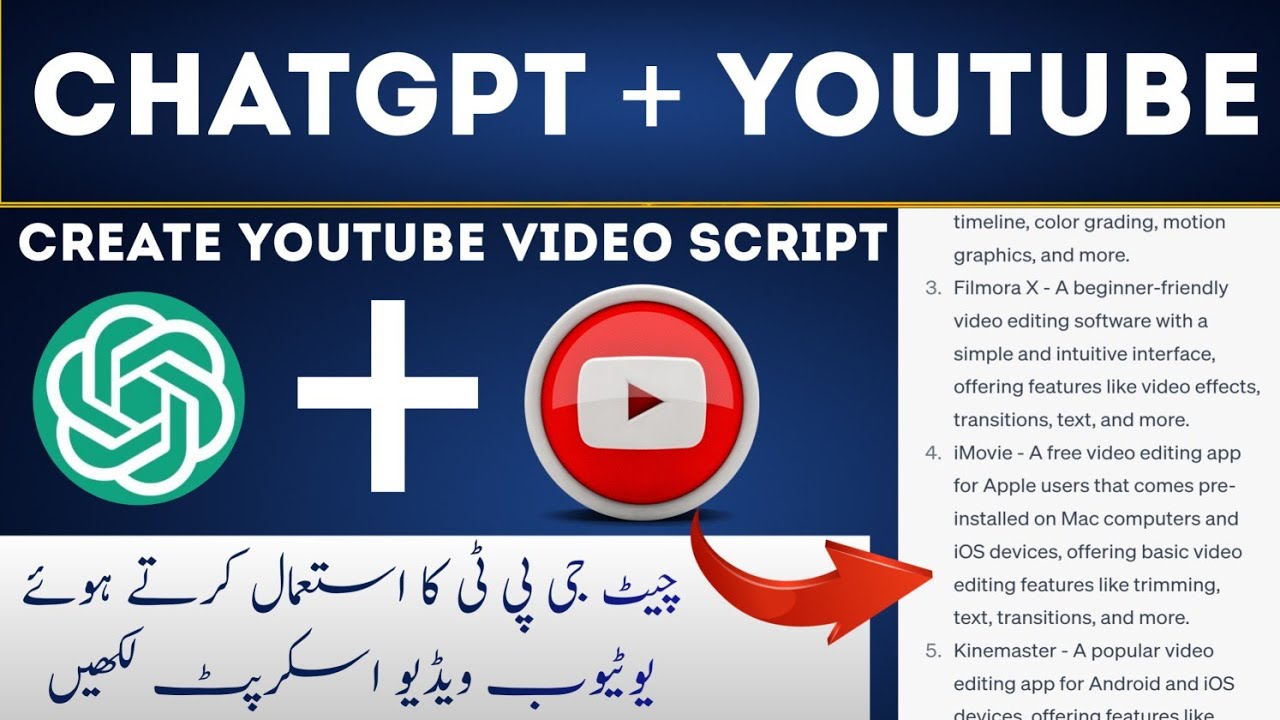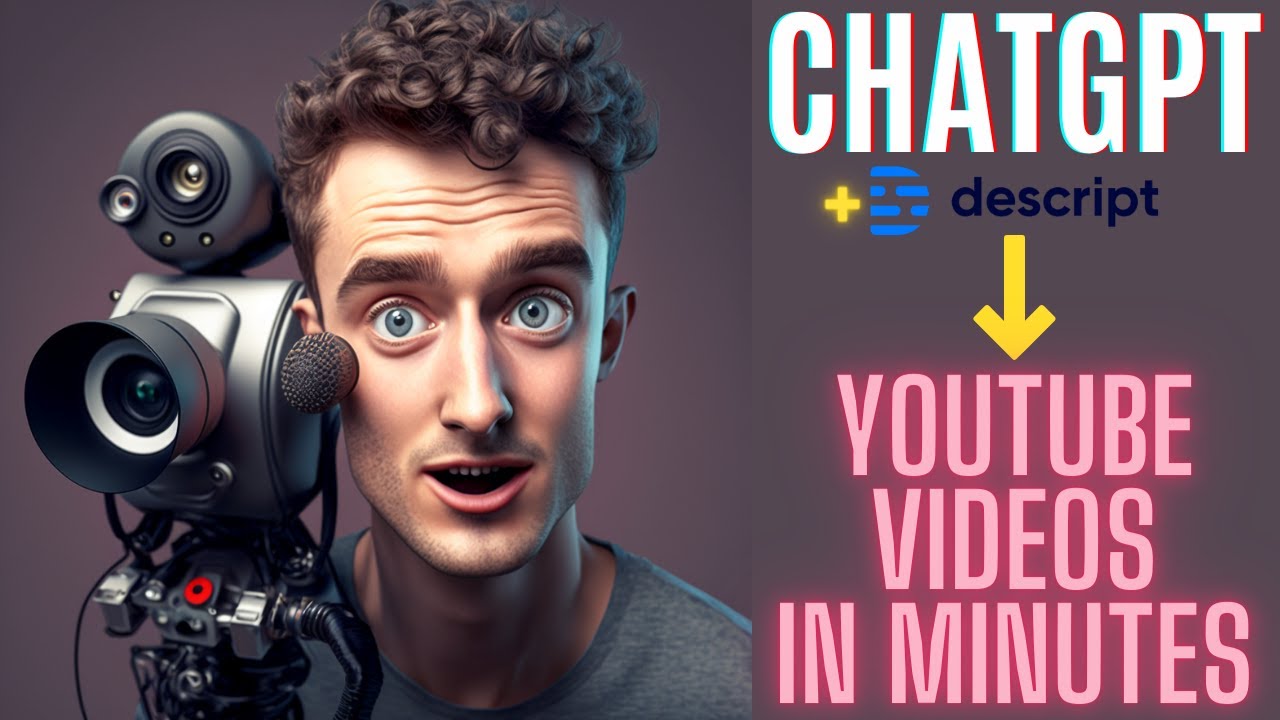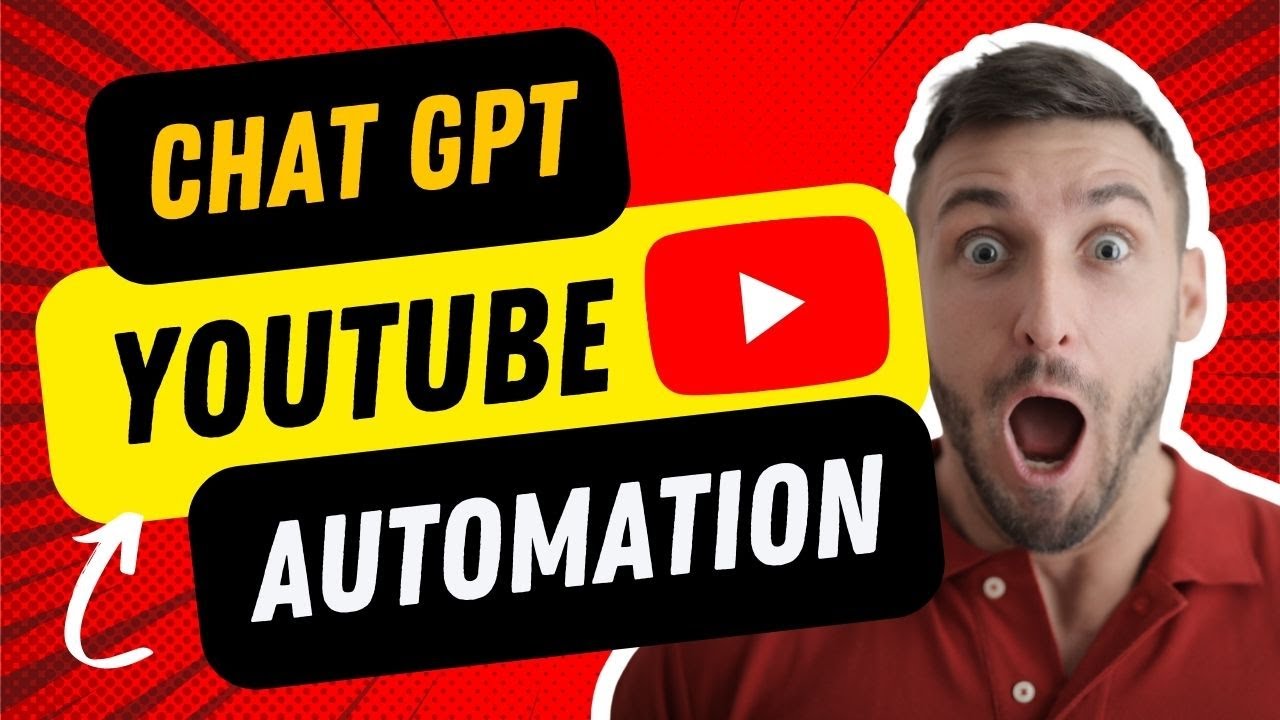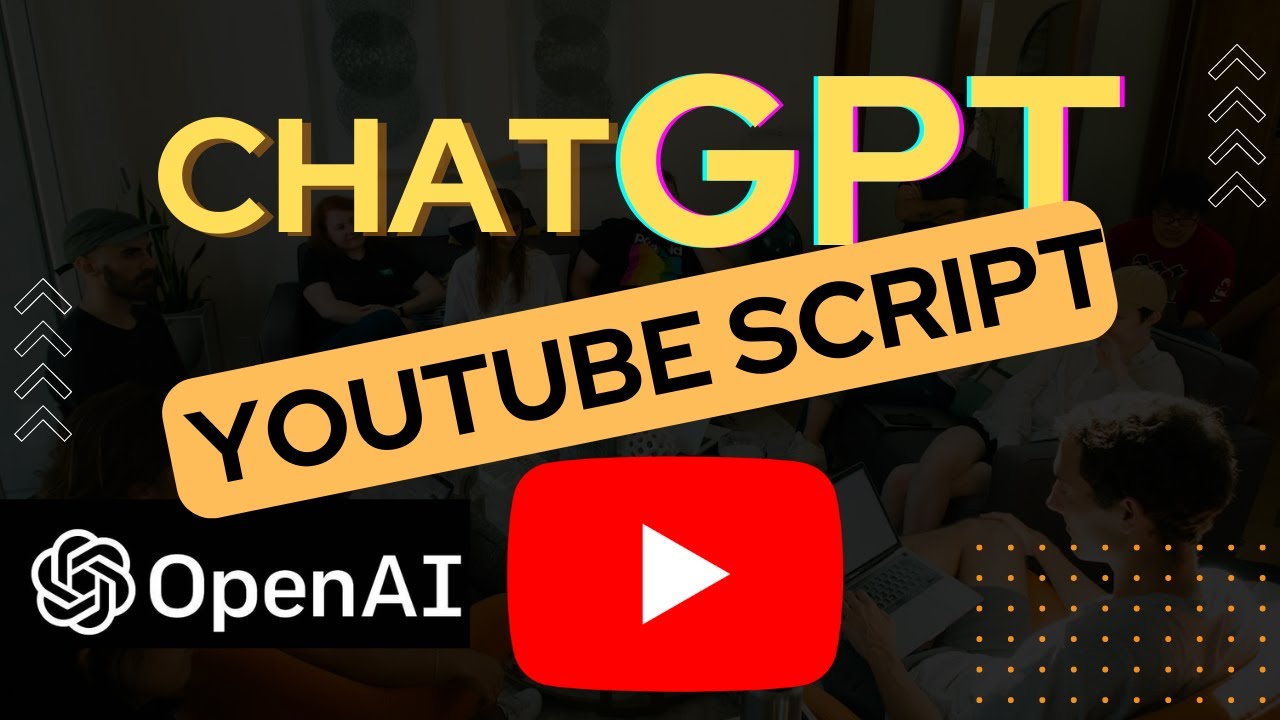Have you ever wished you could quickly grasp the content of a YouTube video without watching the entire thing? Well, that's where video transcription comes in! Transcribing YouTube videos means converting spoken words into text, making it easier to consume information. It’s not just a time-saver; it also helps with accessibility for those who are deaf or hard of hearing. Plus, transcriptions improve SEO for creators, allowing their content to reach a wider audience. Let’s dive deeper into why transcription matters in the
Understanding ChatGPT and Its Capabilities

So, what exactly is ChatGPT? Imagine having a super-smart assistant that can understand and generate human-like text. ChatGPT, powered by advanced AI, is designed to engage in conversations, answer questions, and even help with creative tasks. Here’s a quick overview of its capabilities:
- Natural Language Understanding: ChatGPT can comprehend complex queries, making it easier for users to get the information they need.
- Text Generation: Need a script or a summary? It can generate coherent text based on prompts.
- Context Retention: It remembers the context of a conversation, allowing for more meaningful interactions.
- Multilingual Support: ChatGPT can understand and generate text in multiple languages, broadening its usability.
Now, how does this tie into YouTube video transcription? ChatGPT’s advanced language processing abilities can be leveraged to transcribe video content effectively. Here’s how:
- Efficiency: Instead of manually typing out every word, ChatGPT can convert spoken dialogue into written text almost instantly.
- Accuracy: With continuous learning, it minimizes errors and captures nuances in speech, ensuring the transcription is as close to the original content as possible.
- Customization: Creators can fine-tune the output based on their preferences, such as style and tone, making it sound more like their voice.
In summary, ChatGPT isn’t just a conversational AI; it’s a powerful tool that can revolutionize how we approach video transcription, making information more accessible and engaging. Whether you're a content creator, educator, or viewer, understanding and utilizing this technology can enhance your experience on platforms like YouTube!
Also Read This: Does YouTube Unsubscribe You from Channels? Understanding YouTube's Auto-Unsubscribe Feature
3. Step-by-Step Guide to Using ChatGPT for Transcription

Transcribing YouTube videos with ChatGPT can be a game changer, especially if you want to save time and effort. Whether you're a content creator, a student, or just someone who loves learning from videos, here's how you can use ChatGPT for transcription in a simple, step-by-step manner!
- Choose Your Video: Start by selecting the YouTube video you want to transcribe. Make sure the content is clear and has minimal background noise for the best results.
- Gather Your Tools: You’ll need access to ChatGPT and a way to extract audio from the video. Tools like 4K Video Downloader or websites that allow audio extraction from YouTube links can be helpful.
- Extract the Audio: Use your chosen tool to extract the audio from the YouTube video. Save it in a format that's easy to work with, like MP3.
- Upload the Audio for Transcription: Depending on how you use ChatGPT, you might need to convert the audio to text. If you have a transcription tool, you can run the audio through that first and then ask ChatGPT to refine or format the transcript.
- Input Text into ChatGPT: Once you have your rough transcript from the audio, input it into ChatGPT. Here, you can ask it to clean up the text, summarize it, or even create a more engaging version. For example, you can say, "Can you make this transcript more conversational?"
- Review and Edit: After ChatGPT processes your request, take some time to review the output. Look for any discrepancies or parts that might need clarification. Fine-tuning is key!
- Format Your Final Transcript: Use formatting elements like headings, bullet points, or numbered lists for easier reading. ChatGPT can assist here too; just ask it to format the final transcript.
- Save and Share: Once you’re satisfied, save your transcript. Now you can share it on your blog, social media, or with friends!
And there you have it, a straightforward way to leverage ChatGPT for transcribing YouTube videos. With a few tools and some creativity, you can turn hours of video content into easily digestible text!
Also Read This: How to Convert a YouTube Video to MP4: A Quick and Easy Guide to Downloading Videos
4. Benefits of Automatic Transcription with ChatGPT

Using ChatGPT for automatic transcription comes with a multitude of benefits that can enhance your content creation process. Let’s dive into some of the standout advantages!
- Time Efficiency: Manual transcription can take hours, especially for lengthy videos. ChatGPT can process and format text significantly faster, allowing you to focus on other tasks.
- Improved Accuracy: While no transcription method is perfect, ChatGPT's ability to understand context can lead to more accurate transcriptions than many automated systems. It can also catch nuances that might elude basic transcription tools.
- Enhanced Readability: ChatGPT doesn’t just transcribe; it can also reorganize and clarify the text, making it more readable. You can request a more engaging delivery, which is particularly valuable for educational content.
- Searchable Content: Having a text version of your videos makes them searchable, which can be beneficial for SEO. This means more views and engagement for your content!
- Accessibility: Transcripts make video content accessible to a wider audience, including those with hearing impairments. It’s a great way to ensure that everyone can engage with your material.
- Content Repurposing: Once you have a transcript, you can easily turn it into blog posts, social media snippets, or even e-books. One piece of content can go a long way!
- Cost-Effective: Hiring professional transcription services can be expensive. Using ChatGPT is a cost-effective way to get high-quality transcripts without breaking the bank.
These benefits make using ChatGPT for automatic transcription an attractive option for anyone looking to streamline their workflow and enhance their content creation strategy. Why not give it a try and see the difference it can make?
Also Read This: Is YouTube Down in My Area? How to Check and Troubleshoot Outages
5. Challenges and Limitations of ChatGPT in Transcribing

While ChatGPT is a powerful tool for generating text, it does face several challenges and limitations when it comes to transcribing YouTube videos. Here are a few key issues to consider:
- Context Understanding: ChatGPT relies on contextual information to produce accurate transcriptions. If the audio quality is poor or if the speaker has a heavy accent, the model may struggle to grasp the content correctly.
- Technical Vocabulary: Many YouTube videos cover specialized topics, such as science or technology, which often involve jargon or complex terminology. ChatGPT may not always recognize or accurately transcribe these terms, leading to potential misunderstandings.
- Background Noise: Transcription accuracy can significantly decrease if there is background noise in the video. ChatGPT does not have inherent noise-cancellation capabilities, which can impact the transcription quality.
- Handling Multiple Speakers: In videos featuring multiple speakers, ChatGPT may encounter difficulties in identifying who is speaking, leading to a muddled transcription. This is particularly challenging in discussions or debates.
- Real-time Transcription: ChatGPT is not designed for real-time transcription. While it can generate text from pre-recorded content, it cannot process live audio streams effectively, limiting its use for live events or webinars.
Despite these challenges, advancements in AI and machine learning are continually improving transcription accuracy. However, for now, users should be aware of these limitations and consider them when using ChatGPT for transcription purposes.
Also Read This: What Happened to YouTube’s Autoplay Feature? Is It Gone?
6. Comparing ChatGPT with Other Transcription Tools
When it comes to transcribing YouTube videos, there are several tools available on the market. Comparing ChatGPT with other transcription services can help you understand its strengths and weaknesses:
| Feature | ChatGPT | Other Tools (e.g., Otter.ai, Sonix) |
|---|---|---|
| Accuracy | Good with clear audio; struggles with jargon and accents. | Generally higher accuracy due to specialized algorithms. |
| Speed | Not real-time; can process once the video is available. | Some tools offer real-time transcription for live events. |
| Contextual Understanding | Contextual limitations can lead to errors. | Designed to recognize context better with advanced algorithms. |
| User Interface | Requires input in text format; limited UI for direct use. | Often come with user-friendly interfaces and features. |
| Cost | Free to use but requires manual input; no direct pricing. | Typically subscription-based with various pricing tiers. |
In conclusion, while ChatGPT has its advantages—particularly in generating coherent text responses—it may not be the best choice for transcription due to its limitations. Other tools like Otter.ai and Sonix are specifically designed for this purpose and may provide more accurate and efficient results.
Also Read This: How to Find Porn on YouTube: Navigating Restricted Content Safely
7. Real-World Use Cases and Success Stories
ChatGPT has made significant strides in the realm of transcribing YouTube videos, and the impact is felt across various sectors. Let’s explore some real-world use cases and success stories that highlight the effectiveness of this technology.
1. Education: One of the most notable applications is in the educational sector. Educators are using ChatGPT to transcribe lecture videos or tutorial content. For instance, a popular online course platform utilized ChatGPT to create transcripts of their YouTube video lessons. This not only helped students review content more effectively but also catered to those with hearing impairments. Many students reported improved comprehension and retention when they could read along while watching the videos.
2. Content Creation: YouTubers and creators are leveraging ChatGPT to transcribe their content for blogs and articles. A tech reviewer, for example, found that using ChatGPT to generate transcripts of their video reviews allowed them to produce written content that enhanced their SEO. By converting video content into written form, they reached a wider audience and provided value to viewers who prefer reading or need quick information.
3. Accessibility for the Hearing Impaired: Another success story comes from a nonprofit organization that focuses on accessibility. They implemented ChatGPT for transcribing their YouTube videos, ensuring that their content was accessible to people with hearing difficulties. This initiative not only increased their viewer engagement but also earned them praise from the community. Feedback indicated that this made their resources much more inclusive.
4. Research and Analysis: In the research community, professionals are utilizing ChatGPT to transcribe interviews or panel discussions available on YouTube. A notable example is a documentary filmmaker who transcribed hours of interviews with experts in the field. This not only streamlined their editing process but also allowed them to analyze the content more deeply, leading to a richer final product.
These examples illustrate how ChatGPT's transcription capabilities are transforming the way individuals and organizations interact with video content. The ability to seamlessly convert spoken words into text opens up a world of possibilities, making information more accessible and easier to manage.
8. Conclusion: Enhancing Accessibility with ChatGPT Transcriptions
As we wrap up our exploration of ChatGPT’s role in transcribing YouTube videos, it’s evident that this technology is a game-changer for accessibility. By making video content available in text form, we’re not just catering to those who prefer reading; we’re ensuring that everyone has a chance to access information, regardless of their circumstances.
With the rise of digital content consumption, the demand for accessibility has never been higher. Here’s how ChatGPT's transcription service enhances accessibility:
- Breaking Down Language Barriers: Transcriptions can be translated into multiple languages, opening up content to non-native speakers.
- Helping the Hearing Impaired: With transcripts, individuals who are deaf or hard of hearing can engage with video content fully.
- Improving Content Discoverability: Search engines can index text much more efficiently than audio, making content easier to find.
- Facilitating Learning: Students can read along with videos, improving understanding and retention.
As technology continues to evolve, the future looks bright for content creators and audiences alike. ChatGPT not only simplifies the transcription process but also fosters an inclusive environment where everyone can thrive. Embracing these advancements ensures that we’re not leaving anyone behind in the ever-expanding digital landscape.
 admin
admin








